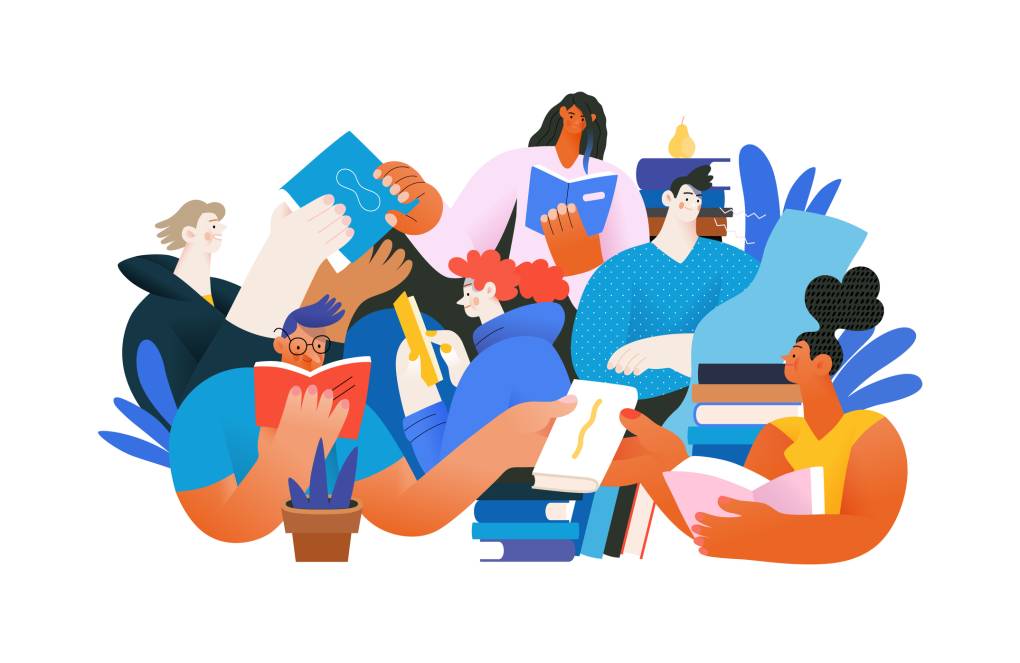 |
| (grivina/iStock) |
Why student voice should be central to school libraries
Warning labels on LGBTQ-themed books in Florida. Challenges to books related to race, sexuality or gender identity in Ohio, Missouri, Virginia and Pennsylvania. A Texas principal placed on leave after accusations of promoting critical race theory. Across the U.S., the topics kids can learn and read about in school have been hotly contested in recent years. Mostly, these controversies have been driven by adults. That’s the way education decisions education are usually made, even in less contentious times, according to school librarian and language arts teacher Julia Torres. “We have a lot of conversations about kids. We will involve them in performative ways, but I have only known of a few organizations that really authentically involve young people at every level of decision-making,” she said.
Torres makes a call to action for school librarians to center student voices in programming and collection management in the book “Liven Up Your Library: Design Engaging and Inclusive Programs for Tweens and Teens,” co-authored by Valerie Tagoe. “[W]e cannot claim to serve young people while excluding them from conversations and decision-making about resources and materials that are primarily for their use. We must always prioritize and protect student empowerment as a key right and responsibility when working with young people,” the two educators write.
In her school, Torres starts the year by conducting a "reading habits and interest survey" among her students. She may be driving toward the same standards with from year to year, but she uses what she learns from the surveys and regular check-ins to chart each group's path. “When you don't include them and it feels more like you're doing education to them, that's how you get a lot of apathetic students, and it's a lot harder for things to meet the ends that you're trying to achieve,” she said.
Torres and Tagoe encourage librarians to build community around students’ reading interests. It just takes listening. For example, Tagoe sponsored a graphic novel club at students’ request. She also invited the Japan America Society to present about Japanese high school life after seeing her students’ passion for manga. The presenter also led a tea ceremony. “So the kids took off their shoes, sat in a circle, made matcha tea, and … they soaked it all up,” Tagoe said. “Just giving them experiences to provide context (to what they’re reading) so that they can learn about different cultures and language and people — I think that's a powerful tool.”
Listening and observation also guides Tagoe’s collection development choices. “You have to look at the curricular needs of the students and your requests, what they're looking at, what they're checking out,” she said. “Especially in high school, I've always tried to kind of move based on what the students are telling me.”
Not everyone grasps the value of student-centered librarianship. Torres recalled a time when an administrator questioned why her students weren’t completing worksheets along with their independent reading. She sees hypocrisy in some adults’ views about students, reading and productivity. “Many adults do not make time for the things that they're expecting the young people to do. And they think that just because they graduated, they have degrees, what have you, they no longer need to do a lot of the things that these young people need to do, which is adultism,” she said.
To help students develop life-long literacy, Torres said educators should be realistic that a reading life has peaks and valleys. While in graduate school, for example, she gravitated toward lighter fare, such as poetry and podcasts, for a break from heavy academic texts. She and Tagoe recommend normalizing those experiences with students. They also said they work to counter messages that teenagers have absorbed from adults about their reading preferences, such as the idea that graphic novels or audio books aren’t “real” reading.
Torres and Tagoe also aim to increase young people’s awareness of their place in a bigger picture. When a student has a great idea, for example, Torres said she encourages them to research who’s done it first. That can lead students to new information and ideas they can build on or respond to, including past achievements and historical injustices.
In their book, Torres and Tagoe write, “Students should absolutely be encouraged to contribute their individual voices and experiences to that of a collective student body, but also understand that their stories and experiences are part of a continuum of voices and stories that existed before them and will continue long after they have graduated or moved on.”



